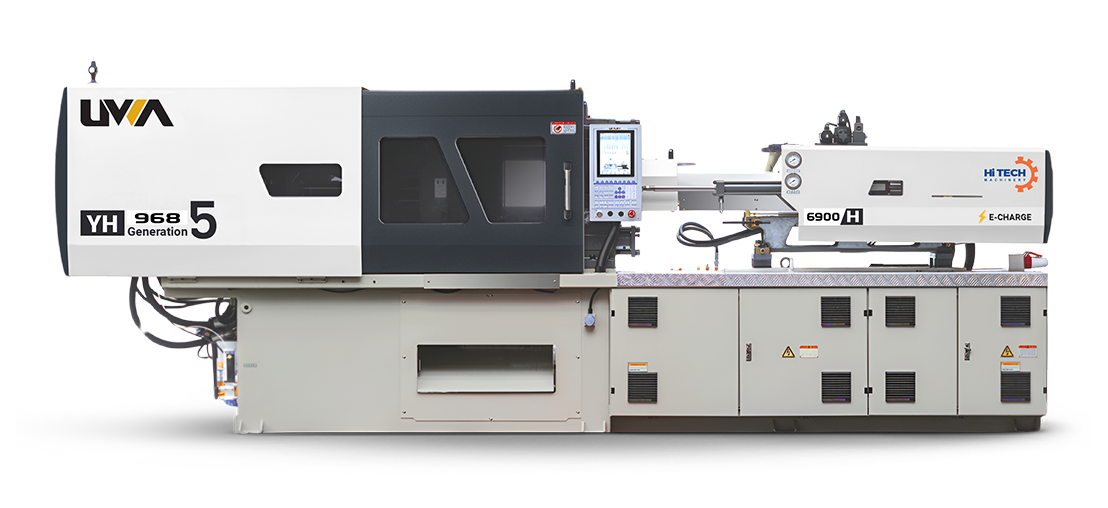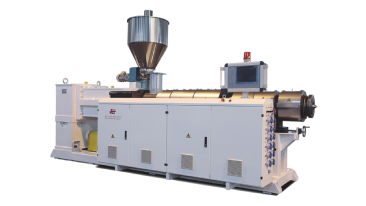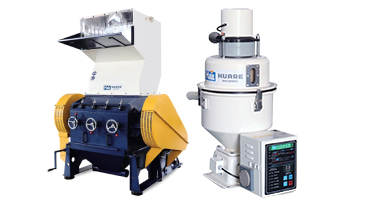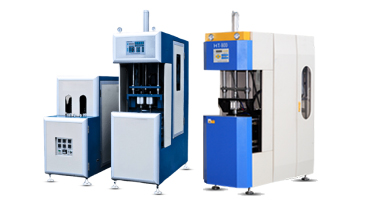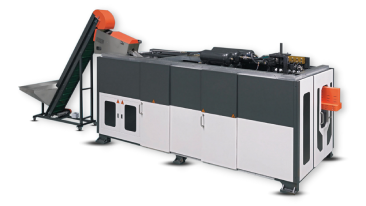Packaging is one of the biggest markets driving plastic consumption today, and there’s still a lot of room for different product options. One obvious player in that space is the bottling segment, which we’ve already covered in a separate post.
The next big one is the paint packaging. It might seem smaller at first glance, but it’s actually much bigger, and there’s plenty of space to scale, sell, and grow. With construction never really stopping, demand for paint (and paint packaging) keeps rolling.
Interested? This blog walks you through how you can start a paint bucket manufacturing business, why it’s a smart choice, what kind of setup you will need, the profit margins, and how HiTech can help you get started.
An Estimate of Paint Bucket Market Size
Paint buckets are a niche within the broader packaging industry, so direct studies on their market size are limited. However, we can estimate their market share by examining the larger paints and coatings sector.
According to Grand View Research, the global paints and coatings market was valued at USD 211.28 billion in 2024 and is projected to reach USD 280.19 billion by 2030, growing at a CAGR of 5.0%
Although specific data on the proportion of this market allocated to packaging is scarce, it is reasonable to estimate that approximately 10–15% of the paints and coatings market is dedicated to packaging, which includes buckets. This would place the paint bucket segment at an estimated USD 21–31 billion in 2024.
This is already a substantial market, but the outlook is even more promising. The demand for paint buckets is expected to grow due to the construction boom. With alternatives to plastic paint buckets not emerging in the near future, and their reuse a common practice, the environmental impact is not a major concern as of now.
Why Invest in Paint Bucket Business?
With so many packaging options, why specifically focus on paint buckets?
1. Simple Mold Construction
Manufacturing paint buckets doesn’t require highly complex molds or expensive machinery, making setup easier and more cost-effective.
2. In-Mold Branding Opportunities
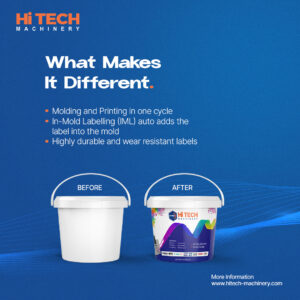
Buckets can be branded directly during the molding process through in-mold labeling, allowing automation, consistent quality, and potential for premium upselling.
3. Strong Local and Export Demand
Both Pakistan and the UAE have growing paint bucket demand that isn’t fully met, leaving room for local sales and export opportunities.
4. High Turnover and Repeat Business
Paint is a consumable product, so the sale of buckets is recurring. Moreover, once clients in construction, industrial, or DIY sectors are secured, you can expect steady repeat orders throughout the year.
How Paint Bucket is Made: The Process
A paint bucket is a product of injection molding – the most common process used for manufacturing plastic containers. What makes paint bucket production (solution we’re suggesting) a bit more specialized, though, is the addition of in-mold labeling (IML), a technique that integrates labeling directly into the molding process.
In a typical setup, molten plastic is injected into the mold and, once cooled, the part is ejected. With in-mold labeling, however, a label is placed inside the mold before the plastic is injected. The label, usually made from the same material as the bucket (often polypropylene), fuses with the surface during molding, becoming part of the final product. Metallic or paper labels can also be used in this process.
The benefit here is that the label becomes permanent, durable, and scratch-resistant, with a premium finish. It won’t peel off or fade over time, unlike stickers or printed labels applied afterward. Plus, since labeling happens within the same production cycle, it saves time and eliminates the need for separate post-processing steps.
Setup Required for Paint Bucket Manufacturing
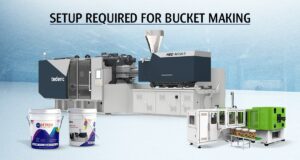
The bucket manufacturing business can be started with any standard injection molding setup. Since we are focusing on a more common option, the 16L branded paint bucket, you will need a slightly larger setup to handle it properly.
1. Two-Platen Injection Molding Machine
For a 16L bucket (650 g), a two-platen 550-ton machine is recommended by HiTech. It usually runs a single-cavity mold for 16L buckets. Smaller bucket sizes can be made with multi-cavity molds to improve production speed.
2. Machine for Handle and Lid
For making handles and lids, a smaller injection molding machine (100 tons) can be used. Some setups switch molds on a single machine, while others use two separate machines for faster production and scaling. Both options can work.
3. In-Mold Labeling (IML) Unit
The in-mold labeling setup includes a robotic arm that picks up a label and places it inside the mold before injection. When the plastic is injected, the label becomes part of the bucket itself.
4. Auxiliaries and Supporting Equipment
You will also need several auxiliary machines to complete the setup. These include a hopper dryer, air compressor, chiller, robotic arm, and a conveyor system for moving finished buckets to the collection area.
Production Rates: Market vs HiTech Solution
Production speed is what truly gives a manufacturer a competitive edge. In most existing paint bucket manufacturing setups, cycle times range between 25 to 35 seconds per bucket. That typically translates to around 100 to 150 buckets per hour on a standard single-cavity machine.
With HiTech’s latest injection molding setup, with an optimized mold design and cooling efficiency, we have been able to achieve a cycle time of just 16–18 seconds. This means production can reach 200–240 buckets per hour. With this pace, the daily output can go up to 5,400 units per day (24 h).
| Typical Market Setup | HiTech Recommended
Paint Bucket Setup |
|
| Cycle Time | 25–35 seconds | 16–18 seconds |
| Buckets per Hour | 100–150 pcs | 200–240 pcs |
| Estimated Daily Output (24h) | 2,400–3,600 pcs | 4,800–5,400pcs |
| Energy Efficiency | Average | 10–15% lower power consumption |
Paint Bucket: Making and Selling Costs
When calculating the total cost of manufacturing a paint bucket, the largest component is material cost, primarily polypropylene (PP). Since PP prices fluctuate based on market conditions, it’s difficult to provide a fixed rate. On average:
- Manufacturing cost per 16L bucket: ~PKR 300 – 300+ (≈ USD 1–1.25)
- Wholesale price per bucket: ~PKR 430+
Investment in Production Setup
A complete production setup, including in-mold labeling (IML) machines, injection molding units (for bucket and lid), and auxiliary equipment, can cost around PKR 100 million. Based on conservative estimates, break-even can typically be achieved within 16–20 months.
This may seem like a significant investment. However, HiTech Machinery can also provide affordable customized solutions for those who are just beginning the manufacturing journey.
How HiTech Machinery Can Support Your Journey?
Hitech Machinery is a leading supplier of plastic machinery. Besides machinery, we provide complete turnkey solutions for every project, just like we have outlined for paint bucket manufacturing.
In addition, we offer:
- After-Sales Service
- Local Warranty
- Spare Parts
If you’re looking to start a new paint bucket manufacturing business or upgrade your existing setup to modern machinery, HiTech Machinery can help you every step of the way.
Contact HiTech Machinery today, and let’s turn your manufacturing plans into reality.

